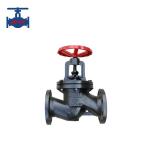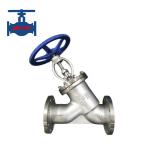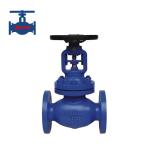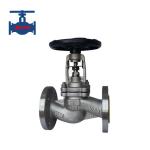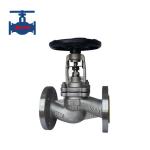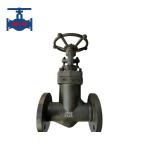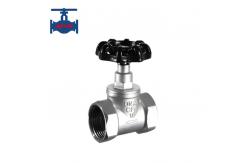Highlight: Female Threaded Globe Valve
Product introduction:
J11W female threaded globe valve is typically used in occasions
with strict sealing requirements. In addition to controlling gas,
liquid and steam media, it is also suitable for controlling sewage
and media containing fibrous impurities. The product has many
characteristics such as compact structure, exquisite appearance,
excellent performance and convenient use. It is suitable for air,
steam, water, gas, oil, corrosive media, etc., and is widely used
in petroleum, chemical, metallurgy, light industry, papermaking,
refrigeration and other working fields.
Product technical parameters:
Model | J41H-16C, J41W-16P |
Test pressure | 2.4MPa (24kgf/cm2) |
Working pressure | ≤1.6MPa (16kgf/cm2) |
Working temperature | ≤200℃ |
Medium application | Water, steam, oil and weak corrosive mediums |
Connection way | Female Thread |
Driven method | Manual, and bevel gear, pneumatic and electric actuator optional |
Usage range | Automation pipeline control in power, metallurgy, petrochemicals,
environmental protection, energy management, fire protection
systems, etc.
|
Product features:
- Structural Advantages: Globe valves feature a simpler design than gate valves, with a
single sealing surface that facilitates manufacturing and
maintenance. They are suitable for a wide pressure range. When
fully closed, the disc travel is shorter, resulting in a lower
overall height.
- Operational Characteristics: The opening/closing height is approximately 1/4 of the seat
diameter, ensuring reliable shut-off and easy flow regulation.
- Longevity Benefits: When open, the sealing surfaces of the seat and disc are
separated, minimizing wear and extending seal life.
- Usage Limitations: Unidirectional flow requires directional installation. Longer
than gate valves, they have higher torque requirements, making
rapid operation challenging. The tortuous flow path increases
resistance and energy loss.
- Mechanical Requirements: When enters from below the disc, operation must overcome
stem-packing friction and pressure. Higher closing forces
necessitate a larger stem diameter to prevent bending.
